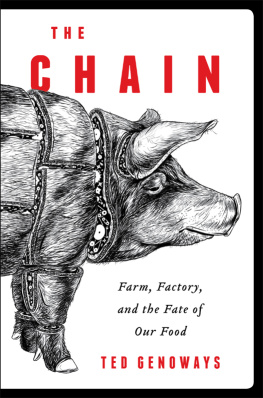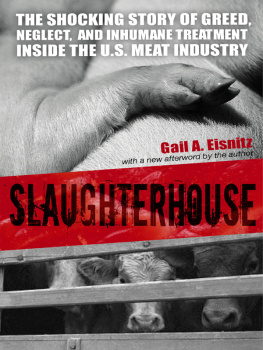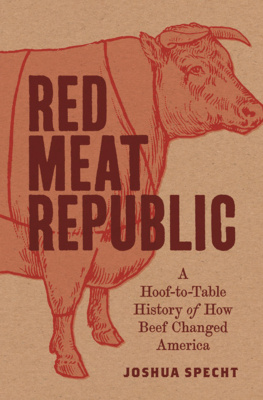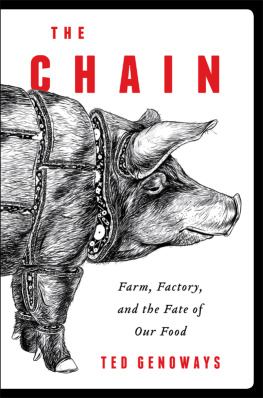
"SLAUGHTERHOUSE will make you aware. It will wake you up. It will change your life."-John Robbinsauthor, Diet for a New America



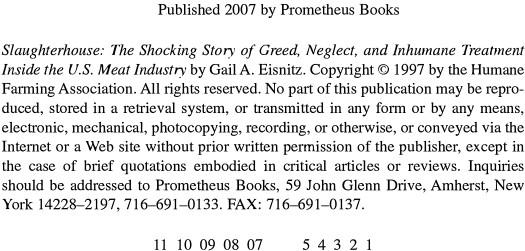

Contents
Part One: Opening the Slaughterhouse Door
Part Two: The Stickers' Confessions
Part Three: The "Slaughterhouse Eight"
Part Four: USDA Deregulates: Full Line Speeds Ahead
Part Five: Friends in High Places
Part Six: A Debased Side of Human Nature
Acknowledgments
I would like to express my heartfelt thanks to several individuals without whom this book would not have been possible. To Bradley Miller and the entire staff of the Humane Farming Association, I am indebted to you for your guidance and for providing the means to turn this slaughterhouse investigation into a book. To Suwanna Gauntlett and the Trustees of the Barbara Delano Foundation, thank you for your unwavering support of this project.
I would like to express my sincere gratitude to Prometheus Books Editor-in-Chief Steven L. Mitchell for having the foresight, courage, and commitment to champion this controversial issue. I am also genuinely appreciative to Associate Editor Mary A. Read for her sensitive nurturance of this book through the editing process.
To my parents, sister, brother-in-law, and nieces Jessica Whitney and Amanda Rachel, thank you for holding my hand and encouraging me through what seemed to be an endless project and the medical nightmare that ensued. To Scott McVay and the Geraldine R. Dodge Foundation, my sincere thanks for ensuring that this material reaches the largest audience possible. To my friends Lisa Landres, Carolle Yamada, Connie Cosler, Bob Baker, and Ellen Truong, I could not have done it without your support.
To friends and colleagues Dr. Stephen M. Kritsick, DVM, and Jolene Marion, Esq., who, although no longer with us, dedicated their entire lives to improving the plight of animals, you have served as an inspiration for me.
And finally, my deep-felt gratitude goes out to all the courageous slaughterhouse employees-men and women, corporate and federal workers-who warmly welcomed me into your homes and lives, patiently answered my innumerable questions, and allowed me to tape-record our many conversations. I am profoundly grateful to you for your brave willingness to go on record on tape and in affidavits, putting your jobs at great risk, so that the public might someday know what takes place behind the closed doors of America's slaughterhouses.
PART ONE
OPENING THE
SLAUGHTERHOUSE DOOR
Prologue
The men Carol Taylor dates all seem to have at least one tattoo and hair that's either razor short or very long. She hangs out with crooks and brawlers in bars and roadhouses, and has been chased at 120 mph in the middle of the night by thugs trying to kill her. When stopped by the police while driving with a phony license, she managed to sweet-talk her way out of trouble without arousing suspicion in the man accompanying her-the violent felon she was scamming with the fake ID.
the four of them drinking Scotch and telling jokes.
The Gibsons train greyhounds to race. Carol Taylor, among other things, is an artist, and has sketched some of the Gibsons' dogs. She opens her portfolio and shows them the progress so far on a drawing of their prize hound.
The Gibsons like Carol Taylor. They've welcomed her into their circle and think of her as a dear friend. Carol Taylor, for her part, is right where she wants to be. She thinks of the Gibsons as the people she's about to have arrested.
I, Gail Eisnitz, prefer to spend my evenings at home with my cat, a cup of tea, and a good book. "Carol Taylor" is my undercover identity and persona. I have been working on and off for months to have Gibb Gibson arrested for the torture and death of thousands of rabbits used as live bait in his dog-training business.
At five-thirty the next morning Jeannie Gibson is cooking us breakfast inside the trailer. Outside, my "boyfriend" Capt. David Lee and I watch Gibb tie a live rabbit to the track's mechanical arm. Some of the country's leading greyhound owners are standing at the edge of the track to see how this round of training goes.
The arm takes off around the track and the dogs leap after it, battering and biting at the helpless rabbit dangling from it upside down. I'm shooting photos as fast as I can-supposedly of the dogs, for portraits, but actually of the people.
Captain Lee ducks his head to speak into his shirt collar.
"Takedown. Takedown."
Seven police cars come tearing down the road, and ten officers move out from behind trees around the track. I slip away, ostensibly to point the police in the direction of the evidence, but mainly because I don't want to face the Gibsons.
After the court releases Gibson and the others on their own recognizance, pending trial, the Gibsons spot me Dumpsterdiving for more evidence close to their dog track. They pull over, shaking their fists and screaming obscenities. We're all by ourselves on this lonely stretch of road, just me and my former friends. Then Captain Lee pulls up.
The Gibsons drive off, yelling at me as if they would beat me to a pulp first chance they get.
The Gibsons aren't the only reason I'm in Florida. As Gail Eisnitz, I've also come to interview a man named Timothy Walker who has written me a letter claiming firsthand knowledge of atrocities so horrific that I would have dismissed them as ravings if it weren't for his sane and sober tone.
His letter will start me on an investigation that will nearly kill me, an investigation into cruelty so deep and broad, to humans and animals, that it touches every person in this country.
One Man's Cry for Help
Timothy Walker is a troublemaker.
In the 1980s, when employed as a Kansas City weights and measures inspector, he found that for the previous thirty years gas stations had been shortchanging their customers. Instead of keeping his mouth shut like everyone else, he blew the whistle. The case made headlines all over Missouri.
Later, as an energy auditor for the city, he tried to get officials to do something about the poverty he saw in the course of duty. The city, claiming budget constraints, refused to act. Walker ended up buying storm windows for low-income families out of his own pocket, paying one elderly woman's realestate taxes, and bringing Thanksgiving dinner to another.
I first heard of Timothy Walker back in 1989 when, as a field investigator with a Washington, D.C.-based animal protection organization, I received a letter from him. He wrote that he had firsthand knowledge that Kaplan Industries, a slaughterhouse in Bartow, Florida, was skinning cattle while they were still alive.
Skinning live cattle? As a cruelty investigator, I would sometimes receive crank letters about cows butchered by aliens, or messages channeled from manatees, or telepathic chickens. But something about this letter seemed genuine.
Next page



